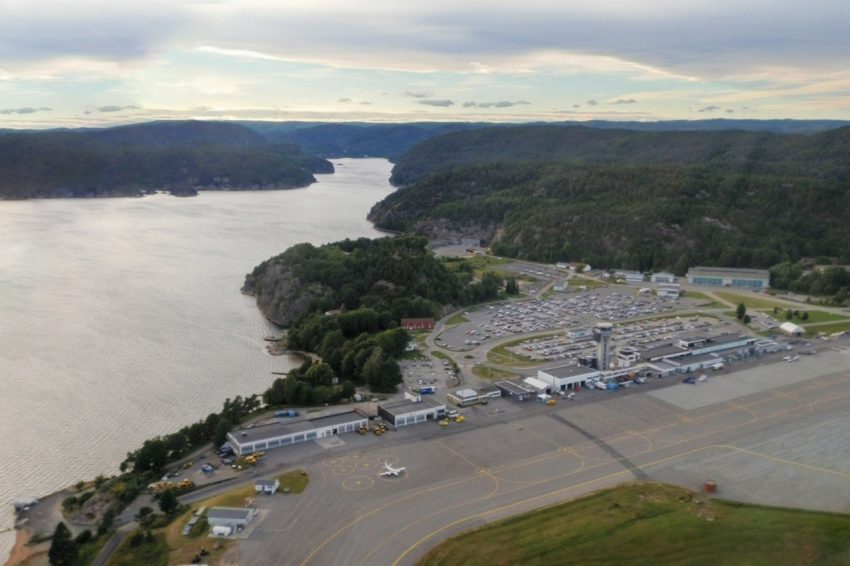Regardless of size, all airports share many characteristics. However, regional airports and smaller aerodromes usually serve very different purposes to their larger city cousins, so their strategic approach must also be different. A tailored Airport Master Plan is invaluable in ensuring that limited resources are invested wisely to best meet the needs of airport customers and local communities.
[blockquote text=”An effective Master Plan is one that is in the room for every stakeholder meeting” text_color=”#004361″ show_quote_icon=”yes”][vc_separator type=’transparent’ position=’center’ color=” thickness=’5′ up=” down=”]
Tailoring an airport master plan
There are various templates and guidelines available for regional airport planning. These provide useful advice to owners and operators, especially in terms of best practices to follow and pitfalls to avoid. They are, however, less effective as a recipe, in which airport data is fed into one end and a completed Airport Master Plan is issued from the other.
When To70 delivers a Master Plan for small and regional airports, we aim to fully encapsulate the airport’s utility and value to the community. Although the exact process is different for each airport, these are the basic steps that lead to an effectively tailored Airport Master Plan.
Important first steps
Take a current snapshot
Assessing the airport situation as it currently exists is a critical step before any planning can begin. This includes aspects such as:
- Regulatory environment
- Key users and stakeholders
- Regional development and planning
- Aircraft types, classification and number of movements
- Previous Master Plan recommendations and progress
- Landside and airside assets, including condition
Articulate future airport scenarios
Envision what a future picture of the airport could be, based on the current snapshot and key stakeholder input and aspirations. This step may generate some highly imaginative scenarios, so airport development options should be qualified by ranking them against the most likely growth vectors within the specified timeframe of the Master Plan (usually 5-10 years for regional airports). At this point, a SWOT diagram can help to visualise which factors will be important for achieving the airport’s objectives.
Create a future snapshot
Specify a future snapshot of the airport that meets the Master Plan objectives. This should include but not be limited to:
- Infrastructure development required
- Regulatory changes and requirements
- Changes to aircraft types, classification and movement numbers
- Environmental and heritage/cultural impacts
- Airport safeguarding and planning considerations
- Precinct planning and concept plans (landside and airside)
Working through this section generates a list of action items required to move the current situation towards the future snapshot. This list becomes the initial recommendations for the Master Plan.
Getting to the final plan
Recommendations and implementation
Each recommendation is assigned a priority based on factors such as available resources, community support, regulatory requirements and timeframe. Any outstanding actions from previous Master Plans can also be incorporated at this point.
This ranked list of recommendations forms the foundation for an implementation plan. Depending on an airport operator’s requirements, the level of detail can vary from a simple to-do list through to a fully costed schedule of planned activities.
Feedback and publication
In some municipalities, an Airport Master Plan must be presented for public exhibition and comment prior to approval by the appropriate body. That feedback will need to be addressed in the Master Plan before final sign-off.
An effective Master Plan is one that guides every airport stakeholder meeting and is used to ensure that resources are properly assigned in support of the airport’s development towards the agreed vision. Whenever circumstances change, airports should not hesitate to update the plan, as this provides valuable insights into future master planning activities.
About To70. To70 is one of the world’s leading aviation consultancies, founded in the Netherlands with offices in Europe, Australia, Asia, and Latin America. To70 believes that society’s growing demand for transport and mobility can be met in a safe, efficient, environmentally friendly and economically viable manner. To achieve this, policy and business decisions have to be based on objective information. With our diverse team of specialists and generalists to70 provides pragmatic solutions and expert advice, based on high-quality data-driven analyses. For more information, please refer to www.to70.com.


GREAT BLOG REALLY IMPRESSIVE I M GAINING MUCH KNOWLEDGE BY THAT.